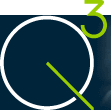  |
|
3D SCANNING OVERVIEWOur staff have been 3D scanning people and objects since 1999.
The Concept of 3D ScanningMost people know about 2D scanners, or flatbed scanners as they are better known. These devices are now almost standard in homes and offices for converting documents and pictures into computer data. You can do something similar with 3D objects. 3D scanners can scan real world solid items such as phones, cars and people and converts those scans into accurate industry standard 3D computer data. 3D scanning is becoming more popular with designers, artists and manufacturers as they become better educated about 3D scanning. The data can be used by engineers, designers, radiologists, artists, educators, animators and jewellers among many others. What can you do with 3D scans?
3D scanning creates computer data that is three-dimensional. Using 3D computer modeling programs, scanned objects can be rotated and manipulated on a computer screen. Using virtual reality force feedback devices and headsets people can even 'feel' and 'see' the object in a computer generated environment. Objects from the size of a tooth to mountains and buildings can be scanned. Head and body scans are also common now, especially for movie special effects and product designs that are worn on the human body. Movies often scan actors to create a digital version of the actor. The digital version then does things that neither an actor or stunt person could achieve. A common use is to turn these digital actors into ghosts or merge them with other mythical creatures. Actor scans can also be used for the computer game version of movies. Surveyors use scan data for mapping and mining; designers use scan data to help design products faster and with less errors; engineers use scanning to convert prototypes into tooling data ready for manufacturing; dentists scan teeth molds to make crowns and orthodontic appliances, podiatrists use scanning to help make orthotics; radiologists use scanning to assist in controlling radiation when treating cancer patients; surgeons use scanning to help plan facial reconstructions; artists use scanning to make molds for sculptures. These are just some of many real world applications that 3D scanning is used for today. How do you use scan data?
To make 3D scan data useable, there are specialist software programs that process 3D scan data into files sizes and formats suitable for end users. There are usually software packages that come with each scanner for basic data processing. For advanced data manipulation, specialist programs exist. Scan data can be processed to be suitable for almost all industry 3D computer modeling programs including CATIA, Alias Studio, Pro/E, Solidworks, Rhino, Autodesk Inventor, 3D Studio MAX/Viz, Maya and Softimage among many others. The processing power available in today's consumer level computers means 3D scanning is now a reality for industry and home users. In Europe, Asia and America, 3D scanning is a proven technology in widespread use across many industries. It has been the critical technology that has allowed innovative new products to reach consumers in many fields. For industry specific information on 3D scanning go to the 'Case Studies' page. Types of 3D scannersThe following lists the most common types of 3D scanning technology in use today. For each technology there are a number of different brands available, from small companies to large established companies such as Roland DG. Each has its own advantages and disadvantages. Our 'Links' page has a range of 3D scanning websites for you to visit to learn more. 1. Laser 3D Scanner Lasers are generally expensive but are ideal for capturing complex shapes in their entirety. The ideal surface for laser scanning is a light toned object with a matt finish. Transparent objects and highly reflective objects cause inaccuracies and those surfaces need to be made opaque and less glossy before scanning. 2. Touch probe 3D Scanner 3. White light 3D Scanner White light systems generally cost the same as lasers although there are some lower cost models available that provide less detailed scanning results. Accuracy of 3D Scanners3D scanner accuracy is quite confusing due to the same term being used by manufacturers that actually mean different things. A general overview of accuracy is provided in the document below. |